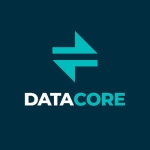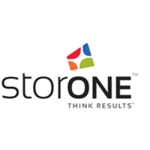What is our primary use case?
We have multiple data centers in different countries where we need local access to shared storage and network storage.
We have AFF platforms and FAS platforms from NetApp for either hot storage purposes or cold storage, with cold being our backups and hot being for our production applications.
The types of storage volumes we have are for virtual machine hard disk storage. We currently are using VMware and will be switching away from that due to the Broadcom license situation, but NetApp ONTAP works very well with VMware as it is integrated effectively. We rely on it for that.
Additionally, we use Kubernetes and have numerous applications hosted in that environment. We use multiple protocols for persistent volumes including NFS, iSCSI, and NVMe over TCP. These comprise our main use cases.
What is most valuable?
The fact that NetApp ONTAP supports NVMe over TCP is a significant advantage. This newer technology is very performant. We have faced some issues with it, not specifically due to NetApp ONTAP, but due to Linux kernel bugs which are being addressed currently. Because it's a newer protocol, there are some issues, but having access to that particular protocol with low-latency network storage is one of the best features.
Another valuable feature is the number of Ansible modules provided by NetApp. We use these to automate the setup and configuration of the NetApp ONTAP cluster and to create actual volumes. It has a REST API, which the Ansible modules likely use under the hood, but the fact that there are multiple ways to automate the storage is fantastic.
The system provides alerting for misconfigurations with links to knowledge-based articles for corrections.
Upgrades of the NetApp ONTAP operating system can be configured for full automation, though we prefer manual control.
What needs improvement?
They could expand what is possible to do with automation as there are gaps in the Ansible module coverage they have. There is certain functionality that NetApp ONTAP offers that these modules are incapable of handling. They do have some generic Ansible modules, so you can use the module and run a CLI command with that, which allows you to accomplish everything in a way. It would be better if they had more modules tailored to specific use cases where you don't need to wrap the CLI commands, keeping with the Ansible declarative framework. It's not a major gap in functionality, however, expanding the automation capabilities they already have would be beneficial.
For how long have I used the solution?
I've used the solution for about two years.
What do I think about the stability of the solution?
We haven't seen a regression. The use of the newer protocol, NVMe over TCP, has added some instability compared to using iSCSI, but there hasn't been a true regression.
What do I think about the scalability of the solution?
The NetApp ONTAP cluster works with HA pairs of controller nodes that are paired up for redundancy purposes.
You can expand your NetApp ONTAP cluster by adding more of these HA pairs. When we have just one HA pair in our cluster, NVMe over TCP works flawlessly with our Kubernetes Linux volumes.
However, when we have multiple HA pairs in the NetApp ONTAP cluster, we start seeing issues with attaching volumes to Kubernetes nodes and mounting them into Kubernetes pods. This seems to be related to an issue in the Linux kernel with the handoff between different HA pairs.
How are customer service and support?
The quality of support is very good, though it varies depending on who is handling the issue. The response times are fast, however, with some of the bigger issues, such as the NVMe over TCP and Linux kernel problem, more effort was required.
When we reached out, they remained continually engaged, and while we had to push them to reach out to Linux distribution providers such as Canonical for Ubuntu, once they started the engagement, everything proceeded smoothly.
Overall, there are no substantial complaints with the support.
Which solution did I use previously and why did I switch?
We haven't used another SAN or NAS system, as NetApp is the only one we've used in that category.
However, we have used network storage in the form of GlusterFS, an open-source storage platform that relies on commodity hardware. With GlusterFS, multiple servers can be used as nodes or peers in a Gluster cluster. We used the free community version for years and encountered regular bugs that impacted performance. These bugs were not always fixed quickly.
We also experienced compatibility issues between certain versions of the Linux kernel and Gluster. The performance was slower, partly due to the nature of the Gluster protocol being more NAS-oriented.
With NetApp ONTAP, we can use SAN protocols that are more performant due to their block-level nature. The biggest gap with Gluster, aside from performance, was the lack of paid support, which is included with NetApp ONTAP and has proven invaluable.
How was the initial setup?
The initial setup was straightforward. The main challenge was learning their concepts and understanding the different components needed within NetApp ONTAP to enable applications to access data. This included networking setup, configuring disks in the platform, and setting up storage virtual machines to separate permissions and group different use cases. We were operational within three months.
What's my experience with pricing, setup cost, and licensing?
The pricing is high. That said, we received favorable pricing at Intel due to the company's large NetApp ONTAP deployment across different organizations. While we're not in the IT department (we're in a shadow IT team), we benefit from the bulk pricing deals.
Despite this, it remains expensive. A significant advantage is that hardware purchases include support for multiple years, eliminating the need for annual support agreement renewals.
When considering the included support, technology upgrades, and extensive platform testing, the enterprise-level pricing provides considerable peace of mind.
What other advice do I have?
Based on comparison with other enterprise companies we've received support from, NetApp ONTAP performs better than others. While they sometimes require additional pushing, they deserve a rating of nine out of ten.
Which deployment model are you using for this solution?
On-premises
If public cloud, private cloud, or hybrid cloud, which cloud provider do you use?
Other
Disclosure: My company does not have a business relationship with this vendor other than being a customer.






